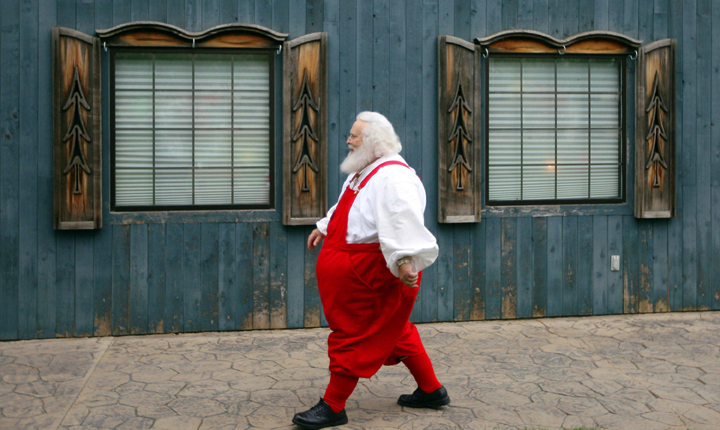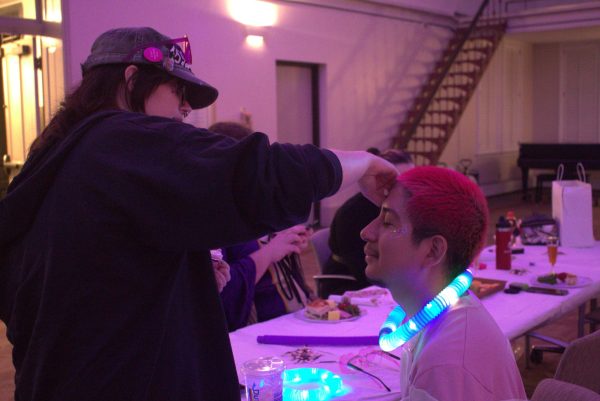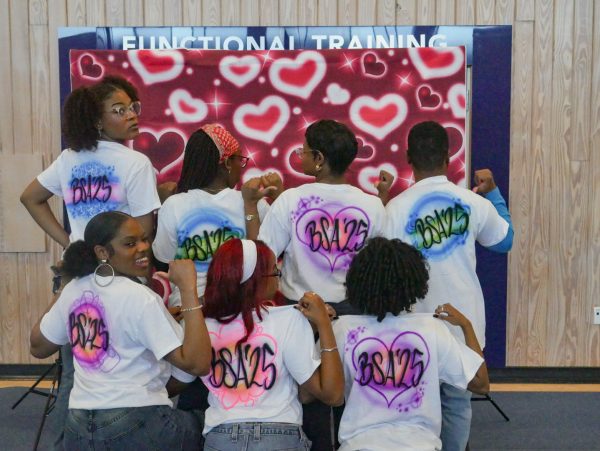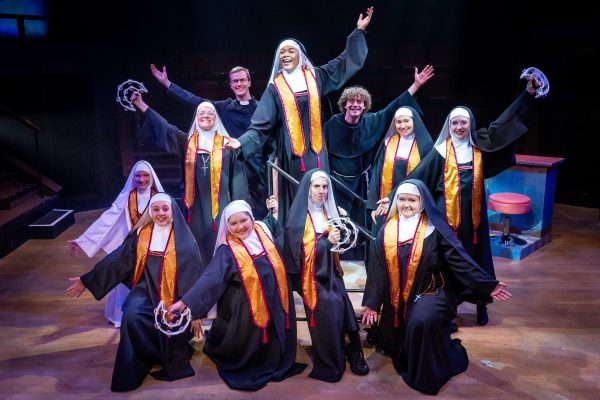Catholic heritage, secular traditions meld in modern Christmas
Dennis Blanden, of Grove City, Ohio, makes his way to class after lunch, October 16, 2009, in Midland, Michigan. Blanden was attending the Charles W. Howard Santa Claus School, the oldest and longest running school dedicated to the art of portraying Santa Claus.
Christmas is celebrated among many involving a large array of traditions coming from both secular and religious origins. Since St. Edward’s University is a Catholic, the university celebrates and focuses on the Christmas tradition.
The Catholic Christmas is the remembrance of Jesus’ birth. The Church recognizes that Jesus was born from the Virgin Mary, Saint Joseph and through the Holy Spirit’s intervention.
This is the mystery of Incarnation.
“The Incarnation is when God becomes man,” said Larry Atkinson, associate director3 of Campus Ministry.
Atkinson reminds us that Christmas is one of the holy days of obligation. It is also the second most important feast in the Church, the first one being Easter.
As such a day, all Catholics are supposed to attend the Christmas Mass. It is composed of the Midnight Mass, which was traditionally a vigil celebrated at midnight. It is followed by the Christmas Mass on the 25th.
However, while Dec. 25 is a holy day, it is not Jesus’ exact birthdate. Old pagan feasts were held on this day, so the Roman Catholic Church decided to counterbalance those non-religious traditions.
This mixture of secular and religious traditions has grown through the ages and several traditions cannot be traced back precisely.
For instance, the Christmas tree is a very controversial tradition. Some say that the triangular shape was chosen to stand for the Trinity of God, but others seem to think that it comes from completely secular traditions of northern Europe.
Santa Claus apparently comes from the bishop Saint Nicholas, a Catholic figure of charity who gave to the poor.
Yet, in certain European countries, he is called Father Christmas and his origins come from non-religious, centuries-old poems.
The tradition of gift-giving might come from the adoration of the Magi, but also from Saint Nicholas’ story; however, his image as we know it, with the red and white costume and the long white beard, was designed by Coca-Cola in the 20th century for commercial reasons.
This iconic character of Christmas shows the current commercial side of this holy day. By its current Catholic name and most of its modern traditions, today’s Christmas has its roots in Christianity.
Yet presents, meals and other secular traditions made most people forget its essence.
“The commercial Christmas overwhelms the Christian one,” said the Rev. Peter Walsh, director of Campus Ministry.
He explained how the focus of Christmas should be on Jesus.
“It can be frustrating because [the commercial Christmas] seems to take over, but when it is in balance … the commercial part fosters the Christians’ holy day; it is a good thing,” he said. “Some Christians get angry at [the commercial Christmas], but … it is something that we can work with,” he said.
Although the popular culture and certain Christian beliefs coexist in one holiday, Atkinson said there are noticeable differences between the two approaches.
Atkinson said Christmas for Christians is the outcome of a period of expectation.
The coming of the Messiah was the fulfillment of the Old Testament’s promises, and Christmas is the ending of the spiritual preparation period known as Advent.
“Christmas is a beautiful feast because we have spent four weeks of preparation,” Atkinson said.
Advent begins Dec. 1 and lasts until Christmas.
“The Advent helps us get ready, to prepare, to anticipate the birth of Jesus,” Walsh said.
At St. Edward’s, Christmas will be celebrated through the Festival of Lights on Dec. 7 with songs, prayer and hot chocolate.







